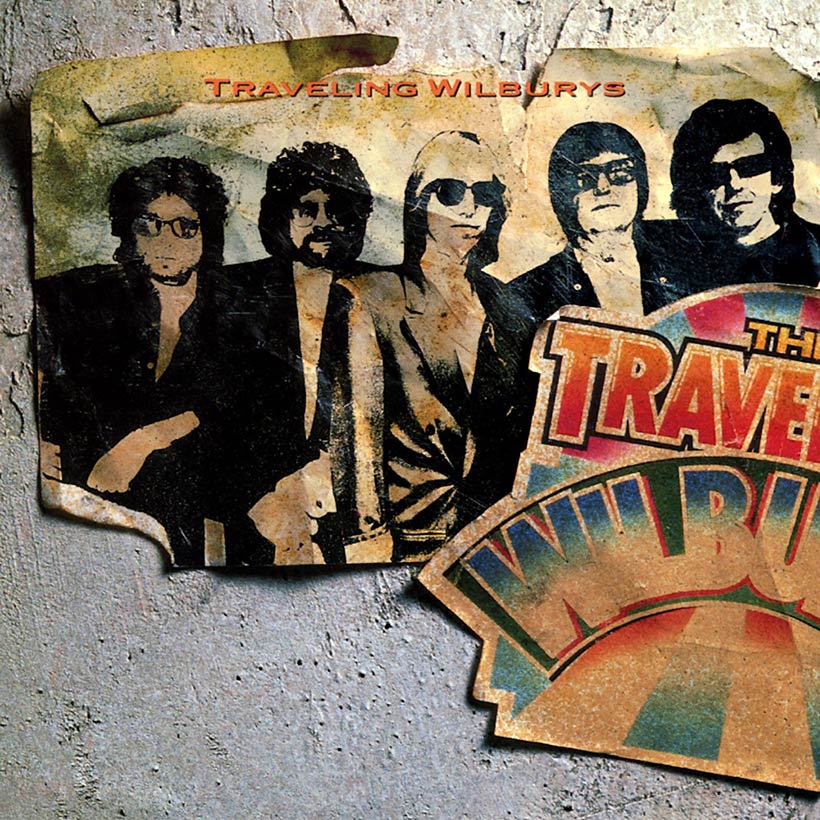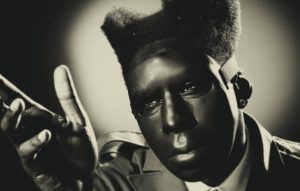The Traveling Wilburys are one of the few bands to genuinely merit the “rock supergroup” tag, though given the self-assured and humorous nature of the five members, it was probably a label they would have dismissed. The quintet – George Harrison, Bob Dylan, Tom Petty, Jeff Lynne and Roy Orbison – were all global stars at the time of recording their first album together, The Traveling Wilburys Vol 1, the sessions for which were joyous affairs that took place across April and May 1988.
Listen to The Traveling Wilburys Vol.1 on Apple Music and Spotify.
“We would have some coffee and somebody would say, ‘What about this?“ and start on a riff,” recalled guitarist and co-producer Lynne. “Then we’d all join in, and it would turn into something. We’d finish around midnight and just sit for a bit while Roy would tell us fabulous stories about Sun Records or hanging out with Elvis Presley. Then we’d come back the next day to work on another one. That’s why the songs are so good and fresh – because they haven’t been second-guessed and dissected and replaced.”
Multi-instrumentalist Lynne, who had previously been a key member of Electric Light Orchestra, had been working with Harrison as co-producer of his album Cloud Nine, during which time the pair had taken to referring to recording errors with faulty equipment as “Wilburys” (adding the punchline, “We’ll bury “em in the mix”). When the newly formed group were deciding on a name, Harrison suggested The Trembling Wilburys, but Lynne’s variant of “Traveling” went down better with the remaining trio.
The musicians were all assigned names in the new band: Nelson Wilbury (Harrison), Otis Wilbury (Lynne), Lefty Wilbury (Orbison), Charlie T Wilbury, Jr (Petty) and Lucky Wilbury (Dylan), and elaborate backstories were created for the characters. Harrison’s close friend Derek Taylor, former press manager for The Beatles and, later, jazz singer George Melly, even wrote an extensive fictional history of the quintet.
“The only thing I could think of was to make an album”
For The Traveling Wilburys Vol 1, they persuaded Monty Python’s Michael Palin to write liner notes. Using the pseudonym Hugh Jampton, (EF Norti-Bitz Reader in Applied Jacket, Faculty Of Sleeve Notes, University Of Krakatoa, East of Java), Palin joked: “The original Wilburys were a stationary people who, realising that their civilization could not stand still for ever, began to go for short walks – not the ‘traveling’ as we now know it, but certainly as far as the corner and back.”
Lynne was the common link in the tale of how they really got together. While working with Harrison, he was also co-producing Orbison’s album Mystery Girl, on which Petty sang backing vocals and played acoustic guitar. One night when they were socializing, Harrison suggested that they join him on a track called “Handle With Care.” The song was to be the B-side for the “This Is Love” single he was putting out in Europe, ahead of the release of the Cloud Nine album. They rang Dylan, who agreed to let them record it in his garage studio. On the day it was cut, Dylan, who had been making them a barbecue lunch, decided to join in the musical fun.
As soon as the spontaneous single was laid down, with its catchy melody and knowing undercurrent of world-weariness (“Been stuck in airports, terrorized/Sent to meetings, hypnotized/Overexposed, commercialized”), the musicians knew they had created something special. “I liked the song,” Harrison said, “and the way that it turned out with all these people on it so much that I just carried it around in my pocket for ages thinking, ‘Well what can I do with this thing?’ And the only thing to do I could think of was do another nine. Make an album.”
The executives at Warner Bros loved the single and agreed to a complete record. The five friends, sharing songwriting and singing duties, were an instant and extraordinary superstar collaboration.
“He clearly meant it as praise”
Though The Traveling Wilburys Vol 1 is only 36 minutes long, it is full of terrific moments. “Dirty World,” a mischievous love song, features some great call-and-response vocals and typically classy saxophone work from Jim Horn, whose playing was so widely admired that he had played on albums with artists as diverse as Elvis Presley, Carpenters, Frank Sinatra and Dizzy Gillespie. Other talented session men on the album include percussionist Ray Cooper and Ian Wallace (so dynamic with David Lyndley’s El Rayo-X band), who plays tom-toms on “Handle With Care.”
“Last Night” is a melodic love song, while “Heading For The Light” is a spiritual quest that is vintage Harrison. One of the standout songs is “Tweeter And The Monkey Man,” which started when Dylan – years ahead of social media, obviously – said he wanted to write a song about a man called Tweeter, set in New Jersey. Petty, who joined in writing the song, said Harrison bowed out of lyric duties on a track he thought was “just too American” for him to meaningfully contribute to. “Bob was like, ‘Yeah, we could use references to Bruce Springsteen titles.’ He clearly meant it as praise,” said Petty. The references to Springsteen songs such as “Mansion On The Hill,” “Thunder Road” and “Highway 99” are littered throughout an evocative track.
Tragically, Orbison died of a heart attack just six weeks after the album’s release, on October 17, 1988. But on the sweet ballad “Not Alone Any More,” the 52-year-old showed in his lead vocals that he had lost none of the vocal mastery that had made him a rock’n’roll legend.
The closing track was the vibrant “End Of The Line,” on which the group chirpily sing, “Well it’s all right/Even if you’re old and gray/Well it’s all right/You’ve still got something to say.” With so many magnificent individual albums behind them, and a collective age of 222, these five wonderful Traveling Wilburys proved they had something wonderful to say together.




